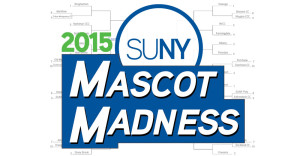
Imagine this: It’s a rainy Saturday afternoon, and you have nothing to do. It seems like the perfect time to catch up on your favorite shows on Netflix, so you decide to heat up some popcorn and grab a comfy seat on the couch. However when you connect to the Netflix home screen you are “welcomed” by a banner that lets you know that the monthly price has increased. You would probably be very confused at the price change, and also a bit annoyed that you have to dish out more cash than you bargained for.
Without net neutrality, this is just one of the types of situations that you would find yourself in whenever you wanted to connect to a content provider on the internet. That is the reason that that the Federal Communications Commission (FCC) has been trying to apply “common carrier” rules to the internet to ensure it is open and free for all. The concept of the “open internet” is what we are accustomed to with our use of the internet now. According to the FCC, this means that it’s open because “it uses free, publicly available standards that anyone can access and build to and it treats all traffic that flows across the network in roughly the same way.”
Recently, the FCC voted in favor of net neutrality when they reclassified broadband as a common carrier. To get a better understanding of the reasons why they even have to fight for this right, let’s go back to the beginning of the story.
The progression of our World Wide Web
In 1991 the High Performance Computing Act (HPCA), created and introduced by Al Gore, was enacted. This act led to the development of the National Information Infrastructure which was a seamless web of interconnected public and private networks, databases, computers, and consumer electronics that essentially gave users access to various information. It was connected in a manner that was technologically unbiased; therefore no industry would be favored over the other. This would eventually evolve into the internet that we have today.
The HPCA also led to the funding of the National Research and Education Network (NREN). This is a very specialized internet service provider that is used for research and educational communities in a specific country. The United States actually has multiple NREN’s such as KanREN (Kansas Research and Education Network) and PennREN (Pennsylvania Research and Education Network). NREN’s are used to introduce new internet protocols and architectures prior to being released to the public internet.
5 years later President Bill Clinton signed the Telecommunications Act of 1996, which was the first overhaul of US telecommunications law in more than 60 years. The goal of this act was to essentially “let anyone enter any communications business-to let any communications business compete in any market against any other.” It also classified broadband providers as providers of “information services” instead of telecommunications services. This removed the FCC’s ability to prohibit telecommunication providers from blocking or discriminating information that is sent within the network.
In 2010, the FCC proposed the “Open Internet Order” which was intended to prevent internet service providers (ISP’s) like Verizon, Time Warner, and Comcast from blocking or interfering with traffic on the web. For example this would stop ISP’s from making some websites load slower because they are affiliated with that business’ competitor. However in January 2014, the Court said that the FCC had used questionable framework to craft the Open Internet Order and that it lacked the authority to implement and enforce those rules. Nevertheless they invited the FCC to continue to work to find other ways to preserve the open internet.
May 15, 2014 the FCC introduced two options they were considering regarding the topic of net neutrality. The first was to reclassify broadband as a telecommunications service, which would preserve the open internet. The other was to allow the internet service providers to establish fast and slow broadband lanes-which would compromise the open internet. They also launched a rulemaking seeking public comment on how to best protect the open internet, in order to obtain responses from everyone who was impacted by the internet. They received over one million responses from both sides of the issue, each giving examples of how the decision to create fast and slow lanes would affect all web users.
Internet content providers went a step further to display exactly how much damage this kind of decision would create. They designated September 10, 2014 as the “Internet Slowdown”; where participating websites purposely slowed down to simulate what would happen if this decision was put into effect. Some of the participants were Netflix, Tumblr, Twitter and Vimeo.
What if our information superhighway was unbalanced?
Speaking of Netflix, let’s go back to our first scenario. When you signed into Netflix and realized that the price had gone up, you were unsure of exactly why it went up. The answer is simple. Without net neutrality, content providers would have two options. They could continue to run on their original lanes or pay for faster lanes to run on. If this option for faster lanes is available many content providers would probably choose to go ahead with the fast lane, so that they can continue to stay ahead of the competition and provide speedy services for consumers.
Bob Fritzinger, an Entrepreneur-in-Residence at the University at Buffalo’s Office of Technology Transfer, Economic Outreach and Incubation Services gave some insight into what that means for the average consumer:
“Exactly how they’d increase revenues is a good question. Tiered access, more ads, combination of both-who knows. But I think it’s clear that the “big guys”, who I would propose include Netflix, would buy the fast lane.”
While this would obviously create issues for consumers, the problem extends far beyond that. It also means an un-level playing field for start-up companies.
“You’re a hot start-up, the next Vimeo. But you can’t afford the fast lane yet. You don’t have enough revenue and you don’t have enough venture capitalist money in yet. But you need the fast lane to attract the users and if you don’t have the users, you don’t get the venture capitalists. The real problem in a world without equal access is that the big guys crowd out all the little guys, at the expense of the little guys,” Bob explains.
“Sure, you can understand why the incumbents would like a fast-lane, but they’re the incumbents and they’re not likely to be the source of the “next big thing.”
Net Neutrality Vote
Finally on February 26, 2015, the FCC ruled in favor of net neutrality when they reclassified broadband as a common carrier, using sentiments from both the Communications Act of 1934 and the Telecommunications Act of 1996. The Open Internet Order on net neutrality was adopted by a 3-2 vote. Does this mean that the “fight” is over? Probably not. The ISP’s are definitely not happy with this decision and will continue to push against it in whatever way they can. However, as long as content providers and consumers advocate for net neutrality, the internet as we know it will continue to be fair and free for all.




Great article, thank you! I think internet must stay fair and free for all – isn’t it all about it?